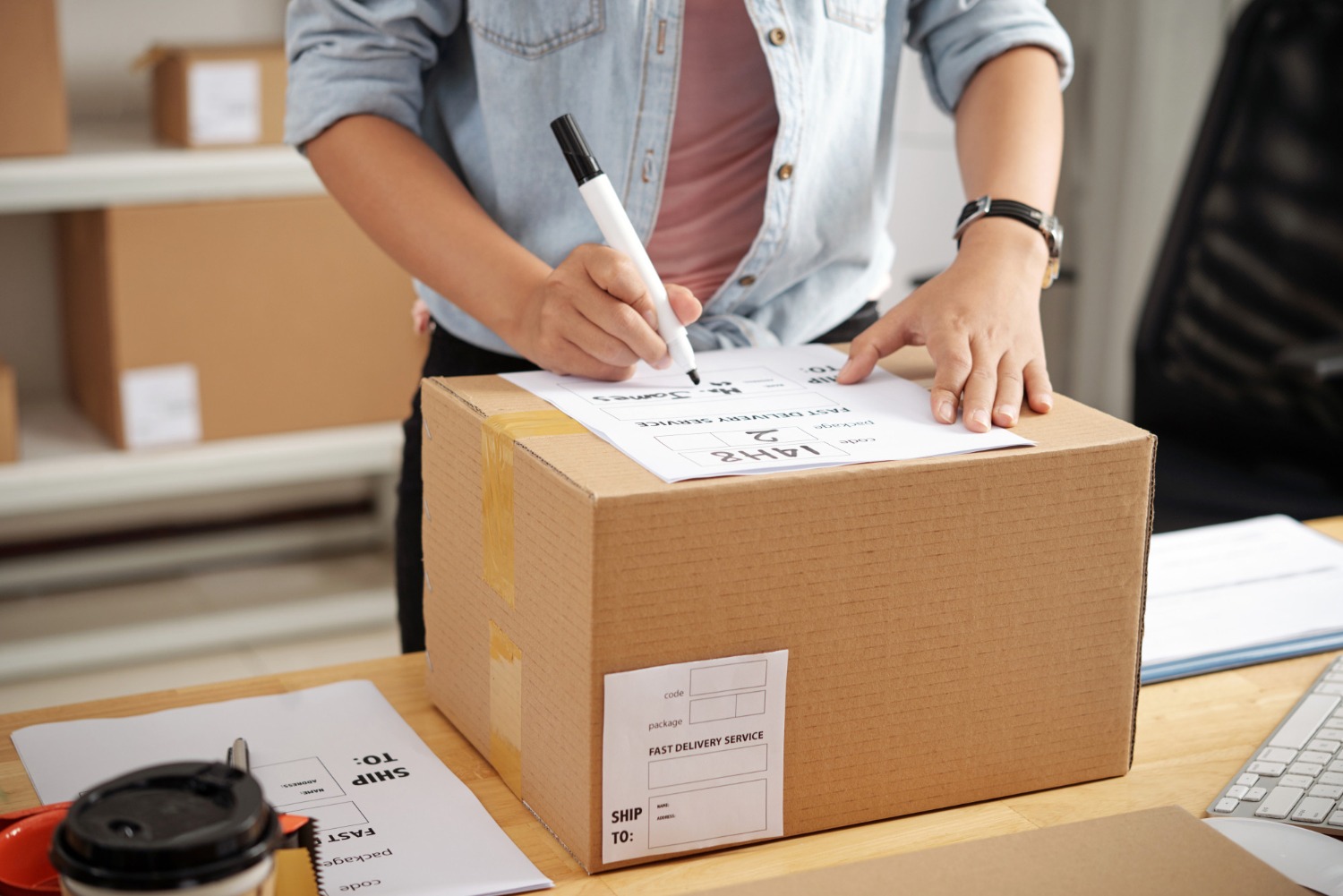
Labour Day - Our office will be closed on the 3/10/2022 reopening 4/10/2022 observing 2022 NSW public holidays

Many sellers face the same problem: they need to print a packing slip but accidentally send the invoice instead. It sounds like a small slip-up, but it can trigger wrong orders, avoidable returns, and unnecessary support queries. One retailer shared that a single misprint caused multiple customers to receive the wrong items.
This guide explains what a packing slip is, why it matters for accurate fulfilment, and how to create one that reduces errors and keeps your dispatch process running smoothly. If you already use a freight platform to book shipments or print labels, your packing slips should follow the same structure for accuracy and consistency.
A packing slip is a document that lists every item included in a shipment. It helps the sender, warehouse team, and customer confirm that the order matches what was purchased, reducing mistakes during packing and delivery. A clear packing slip also supports returns and record-keeping because it shows exactly what was sent.
If you use a shipping platform like Couriers & Freight, keeping your packing slip details consistent with the information you use to book shipments helps avoid errors and keeps your dispatch process organised.
A packing slip should include the same key details that appear in your order and invoice so warehouse staff can verify every item quickly and accurately. The information must match what’s in your e-commerce or accounting system to avoid packing errors.
Using a consistent template for all packing slips keeps your records aligned and reduces confusion for packing staff. Matching details across your invoice, order, and packing slip also prevents shipping mistakes and avoids unnecessary customer enquiries.
Creating a clear packing slip helps reduce packing errors and keeps your fulfilment process organised.
Gather the customer’s name, delivery address, order number, and full item list from your e-commerce or fulfilment system. Accurate information at this stage prevents mistakes later.
Record the SKU, product name, description, and quantity for every item. Check that these details match what has been packed.
Include your business name, address, and contact details so couriers and warehouse staff can identify the order quickly.
Highlight items that are fragile, substituted, or on backorder. This gives packers and receivers the context they need.
Use columns, clear headings, and spacing that helps warehouse teams verify items at a glance.
Confirm that each detail matches your invoice and order record. This final check catches errors before dispatch.
Place it inside the box or in a clear sleeve on the outside so both warehouse staff and customers can access it easily.

Many small businesses start by creating a packing slip in Word or Excel. This works for a small volume of orders, but as sales increase it becomes slow and prone to errors because every detail must be entered manually. Automated tools reduce these mistakes by pulling product data directly from your order or inventory system.
Platforms like Shopify and Xero can generate a packing slip automatically when you book a shipment, keeping item details and quantities consistent across your documents. This approach is also helpful for Amazon sellers or businesses sending parcels through carriers like UPS, where accurate packing slips support fulfilment and returns.
Shipping platforms such as Couriers & Freight also help centralise booking, labelling, and document generation, so your packing slips match the information used across every shipment.
Many sellers print packing slips separately from invoices so customers don’t receive pricing details with their order. Guides from Shopify and UPS recommend this approach because it keeps billing information private and helps staff stay organised.
When printing, use plain white paper so the details are easy for warehouse teams to scan and read. Place the packing slip on top of the items inside the box, or in a clear plastic sleeve on the outside, so it’s visible during checks at dispatch and on arrival. Avoid hiding it under packaging or mixing it with invoice documents.
Keep a digital copy for your records in case a customer needs help with a return or order confirmation.
Here’s a simple packing slip layout that small businesses can use as a template. A clear, well-structured slip helps warehouse staff check items quickly and reduces packing mistakes.
Packing slip templates usually follow this structure, but formats can vary depending on the software or marketplace you use.
Amazon packing slips list the buyer’s details, order number, and a full itemised list, but never show pricing because billing is handled separately. Sellers can print these slips directly from Seller Central or from integrated fulfilment software. Each slip includes a return address and basic return instructions to support quick refunds or exchanges.
A UPS packing slip is generated automatically when you create a shipment in the UPS portal. It includes sender and receiver information, a tracking barcode, and a summary of the items inside. This helps match each parcel to its record and prevents errors during delivery or customs checks.
No matter which platform you use, Amazon, UPS, or a freight tool like Couriers & Freight, the goal is the same. A clear packing slip that helps staff verify what’s inside the box and ensures customers receive the correct order.
A well-prepared packing slip does more than confirm what’s inside a box. It reduces packing errors, cuts down on customer enquiries, and keeps your fulfilment process organised.
Recent e-commerce fulfilment studies show that many order errors stem from incomplete or inconsistent documentation. A clear, accurate packing slip helps prevent these issues by giving staff and customers a reliable reference for every shipment.
Couriers & Freight brings your shipping tasks into one dashboard so your booking details, labels, and packing slips all come from the same source. This helps reduce manual data entry and keeps your order information consistent across every shipment.
The platform connects directly with major carriers, allowing businesses to manage local and international deliveries without switching between systems. Warehouse teams can print labels, generate packing slips, and prepare documents using the same order data.
To see how it works, visit the Freight Shipping page and learn how the platform can simplify your packing and delivery process.









MHP

No Surcharge*

$16.50

$14

$15.50
$0

$15.50

$14.75
$0
$0
$0
$0
MHP Large Item

No Surcharge*

$16.50

$75

$62

$62

$60.10

$14.75
$0
$0
$0
$0
Residential Pickup

No Surcharge*

$6
$0

$9
--

$9

$10.60
$0
$0
$0
$38.50
Reidential pick up 30-99kgs

No Surcharge*

$63
$0

$9
$0

$9

$74.15

$20
Won't carry
Won't carry

$38.50
Residential pick up 100kgs+

No Surcharge*

$198
$0

$9
$0

$9

$158.87

$50
Won't carry
Won't carry

$38.50
Residential Delivery up to 29kgs

No Surcharge*

$6
$0

$9
--

$9.00

$10.60
$0
$0
$0

$38.50
Residential Delivery up 30-99kgs

No Surcharge*

$63
$0

$9
$0

$9

$74.15

$20
Won't carry
Won't carry

$38.50
Residential Delivery 100kgs+

No Surcharge*

$198
$0

$9
--

$9

$158.57

$50
Won't carry
Won't carry

$38.50
Tail Lift Pick up 50-99kgs Sydney / Melbourne

No Surcharge*

$45

$50-$250

$88

$88

$88

$44.07

$120
Won't carry
Won't carry

$61.50
Tail Lift Pick up 100-299kgs Sydney / Melbourne

No Surcharge*

$85

$50-$250

$88

$88

$88

$44.07

$120
Won't carry
Won't carry

$61.50
Tail Lift Pick up 300-499kgs Sydney / Melbourne

No Surcharge*

$120

$50-$250

$88

$88

$88

$44.07

$120
Won't carry
Won't carry

$61.50
Tail Lift Pick up 500kgs + Sydney / Melbourne

No Surcharge*

$250

$50-$250

$88

$88

$88

$44.07

$120
Won't carry
Won't carry

$61.50
Tail Lift Delivery 50-99kgs Sydney / Melbourne

No Surcharge*

$45

$50-$250

$88

$88

$88

$44.07

$120
Won't carry
Won't carry

$61.50
Tail Lift Delivery 100-299kgs Sydney / Melbourne

No Surcharge*

$85

$50-$250

$88

$88

$88

$44.07

$120
Won't carry
Won't carry

$61.50
Tail Lift Delivery300-499kgs Sydney / Melbourne

No Surcharge*

$120

$50-$250

$88

$88

$88

$44.07

$120
Won't carry
Won't carry

$61.50
Tail Lift Delivery 500kgs + Sydney / Melbourne

No Surcharge*

$250

$50-$250

$88

$88

$88

$44.07

$120
Won't carry
Won't carry

$61.50
Dead weight over 32KGS carton freight

No Surcharge*

$16.50

$75

$70

$70

$70

$14.75
$0
Won't carry
Won't carry
$0
Oversize Surcharge 1.20 - 1.54

No Surcharge*
--
$0
$0
$0
$0

$5.40

$10

$15
Won't carry
$0
Oversize Surcharge 1.55 - 1.85

No Surcharge*

$17

$20
$0
$0
$0

$11.93

$10

$15
Won't carry
$0
Oversize Surcharge 1.86 - 2.20

No Surcharge*

$37

$40
$0
$0
$0

$11.93

$10
Won't carry
Won't carry
$0
Pallet Surcharge

No Surcharge*
--
$0
$0
$0
$0
$0
$0
Won't carry
Won't carry
$0
Hand Unload Fee Carton

No Surcharge*
--
$0

$70

$70

$70

$47
$0
Won't carry
Won't carry

$61.50
Western Australia Regional Surcharge

No Surcharge*

%10
$0
$0
$0
$0
$0
$0
$0
$0
$0
*Surcharges may apply to areas/deimensions not listed
**Prices correct of 16th September 2024
Click to start shipping in less than 60 seconds